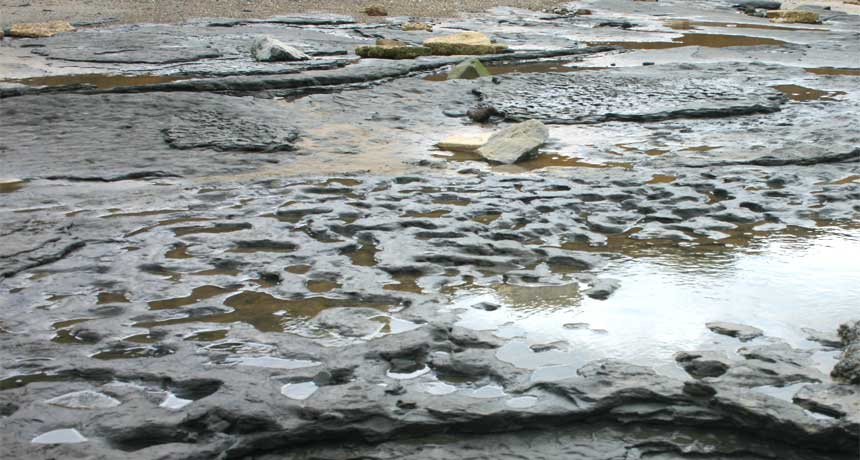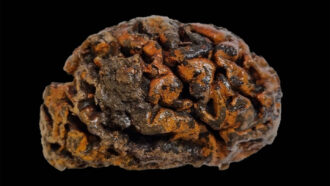Ancient footprints surface in Britain
There are hints they could have been made by ancestors of Neandertals

A waterlogged hominid footprint is shown above a camera’s lens cover. This print was one of dozens that appeared briefly at an ancient coastal site in England. Strong ocean waves eroded the hard silt that had covered them for perhaps 1 million years.
Martin Bates







